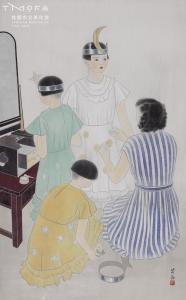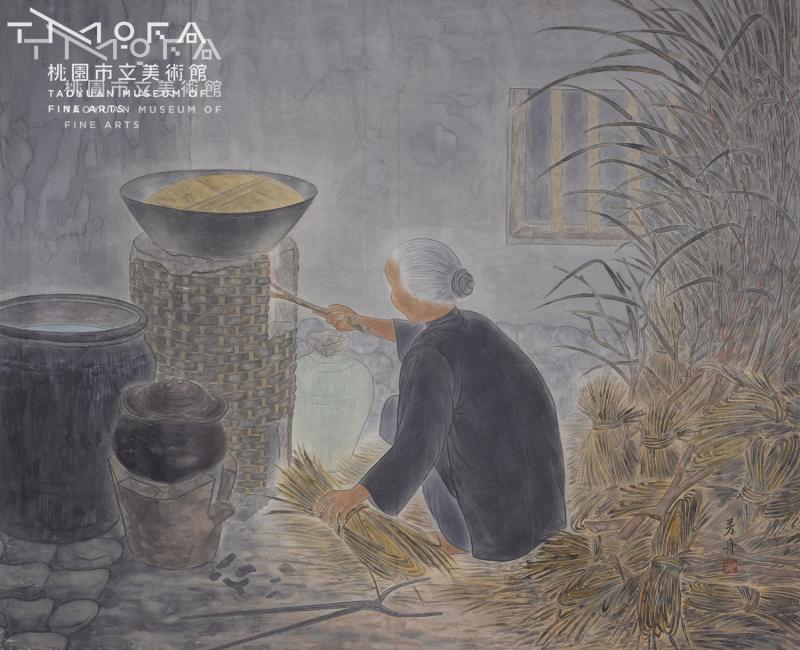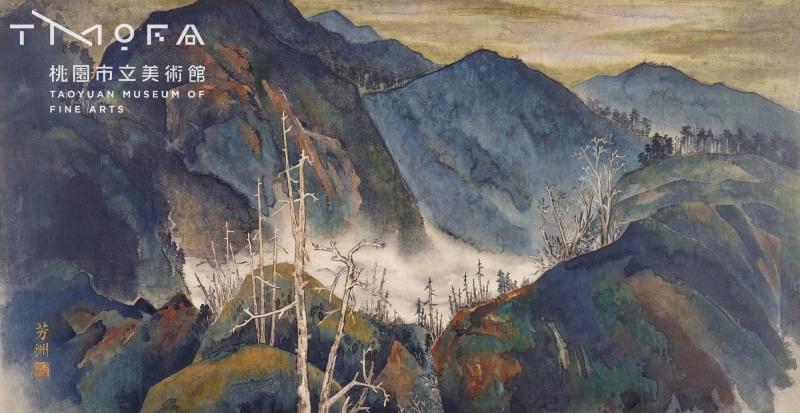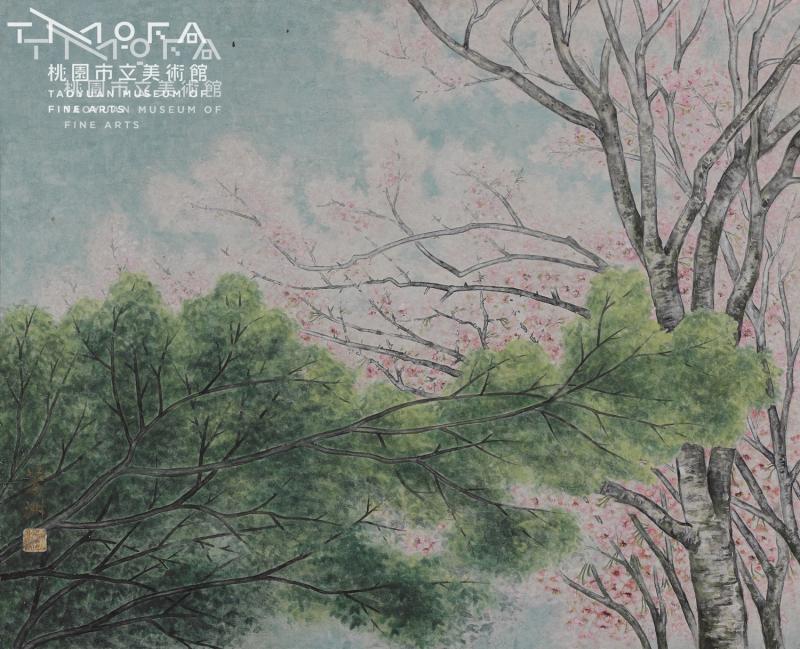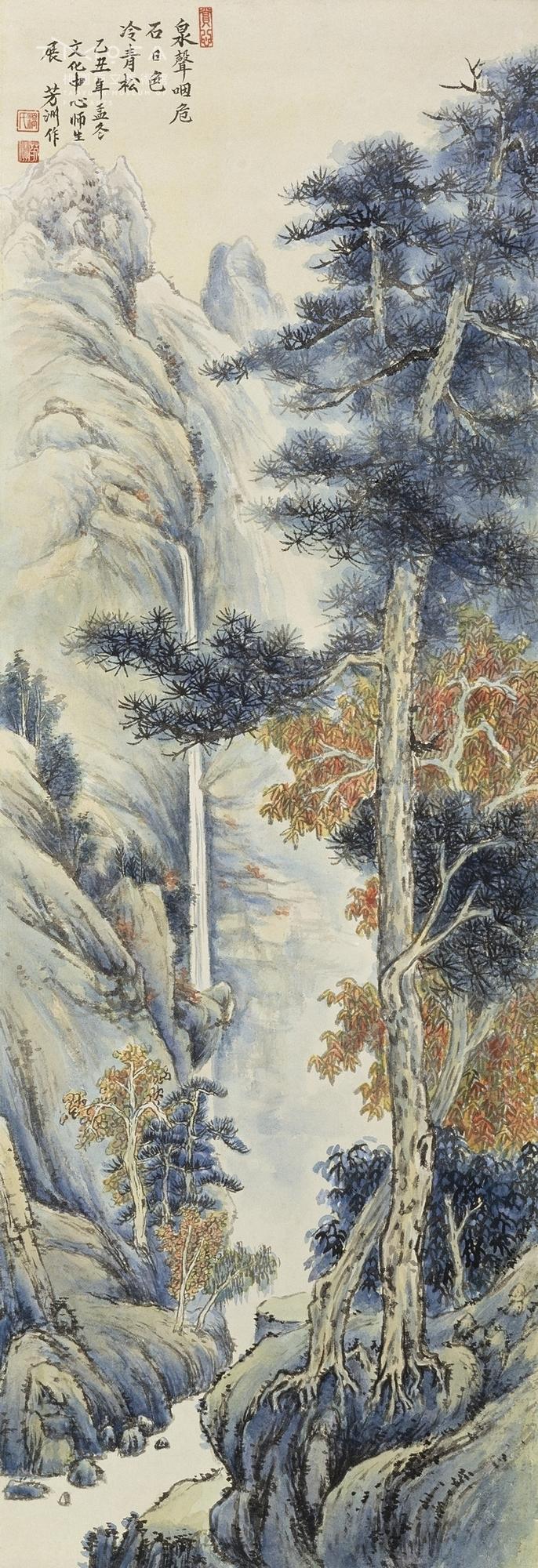Published on:2020-10-16Views:9
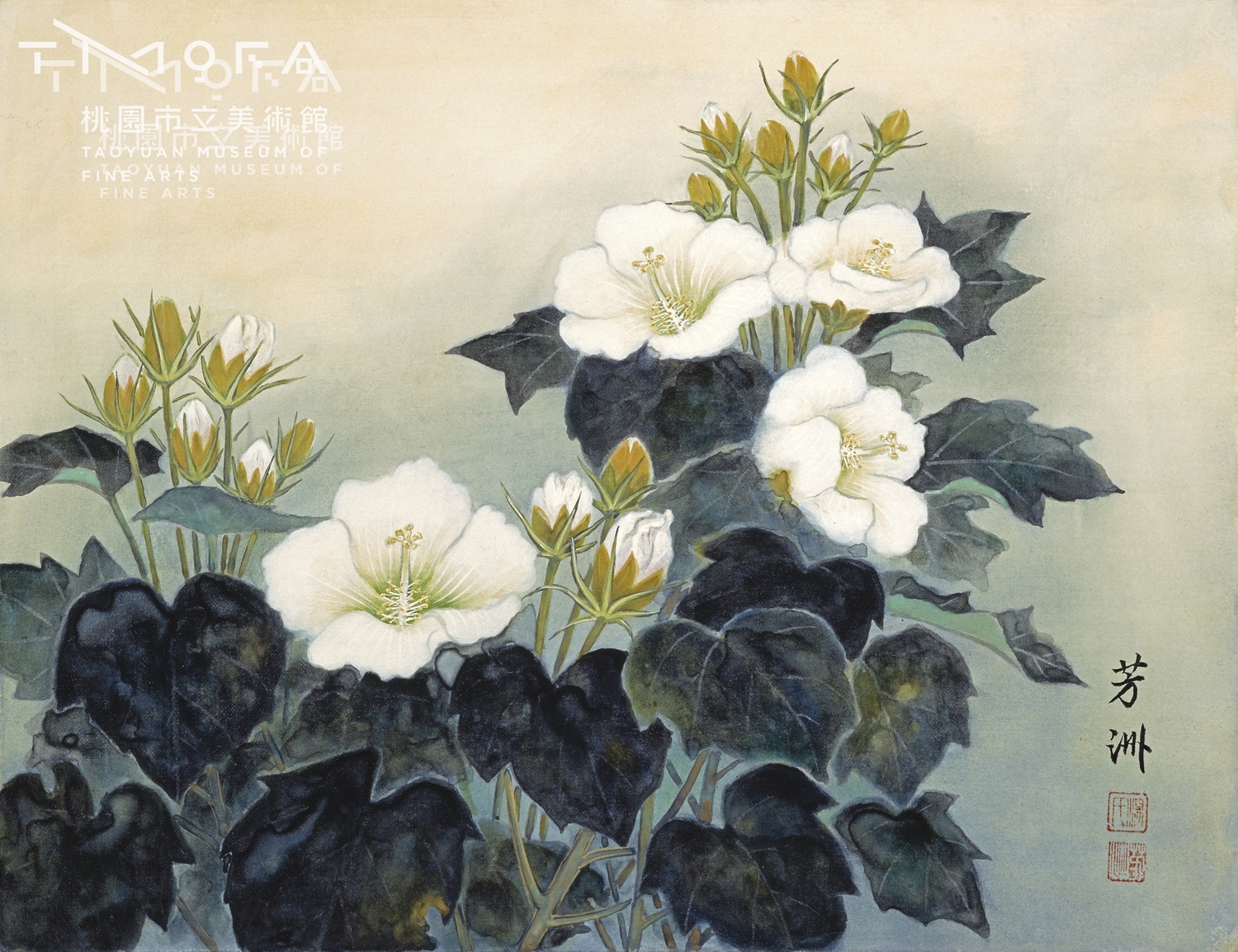
Artwork Analysis
Wen Chang-Shuen (1925–2005) was an important eastern gouache artist in the history of Taiwanese art. As his Mandarin name suggests, his style is characterized by warmth and smoothness combined with elegance and excellence. Wen even established the “Taiwan Greenwater Gouache Painting Association” in 1991 with senior artists Huang Ou-Po and Hsieh Jung-Fan to actively promote eastern gouache. Besides attracting more people to learn and understand eastern gouache, the society has enabled eastern gouache to gain a foothold in Taiwan’s art learning. In a soft and beautiful tone, Wen depicted the gentle and graceful temperament of cotton roses (Hibiscus mutabilis) with greater detail. Some are blossoming, while some are budding. Each is like a lady with a curvy figure in ancient paintings, standing upright or turning her head smiling, trying to catch people’s attention with different postures.
The work is carefully composed in an extremely creative setting. The blossoms in the background form a triangle with the leaves on the lower left and right. Although it is not a traditional steady triangular composition, another triangle is formed together with the inscription to present a state of steadiness. Additionally, flowers are grouped to form a small triangle in the composition. The smooth and elaborate brushstrokes precisely fuse together the feelings conveyed by the eastern gouacheand theme. Tonal change of the leaves is employed to create a sense of spatial flow, as though the cotton roses were caressed by a breeze as revealed in the scene.
The work is carefully composed in an extremely creative setting. The blossoms in the background form a triangle with the leaves on the lower left and right. Although it is not a traditional steady triangular composition, another triangle is formed together with the inscription to present a state of steadiness. Additionally, flowers are grouped to form a small triangle in the composition. The smooth and elaborate brushstrokes precisely fuse together the feelings conveyed by the eastern gouacheand theme. Tonal change of the leaves is employed to create a sense of spatial flow, as though the cotton roses were caressed by a breeze as revealed in the scene.
Artist Profile
More information coming soon.
Other Artwork By The Artist
